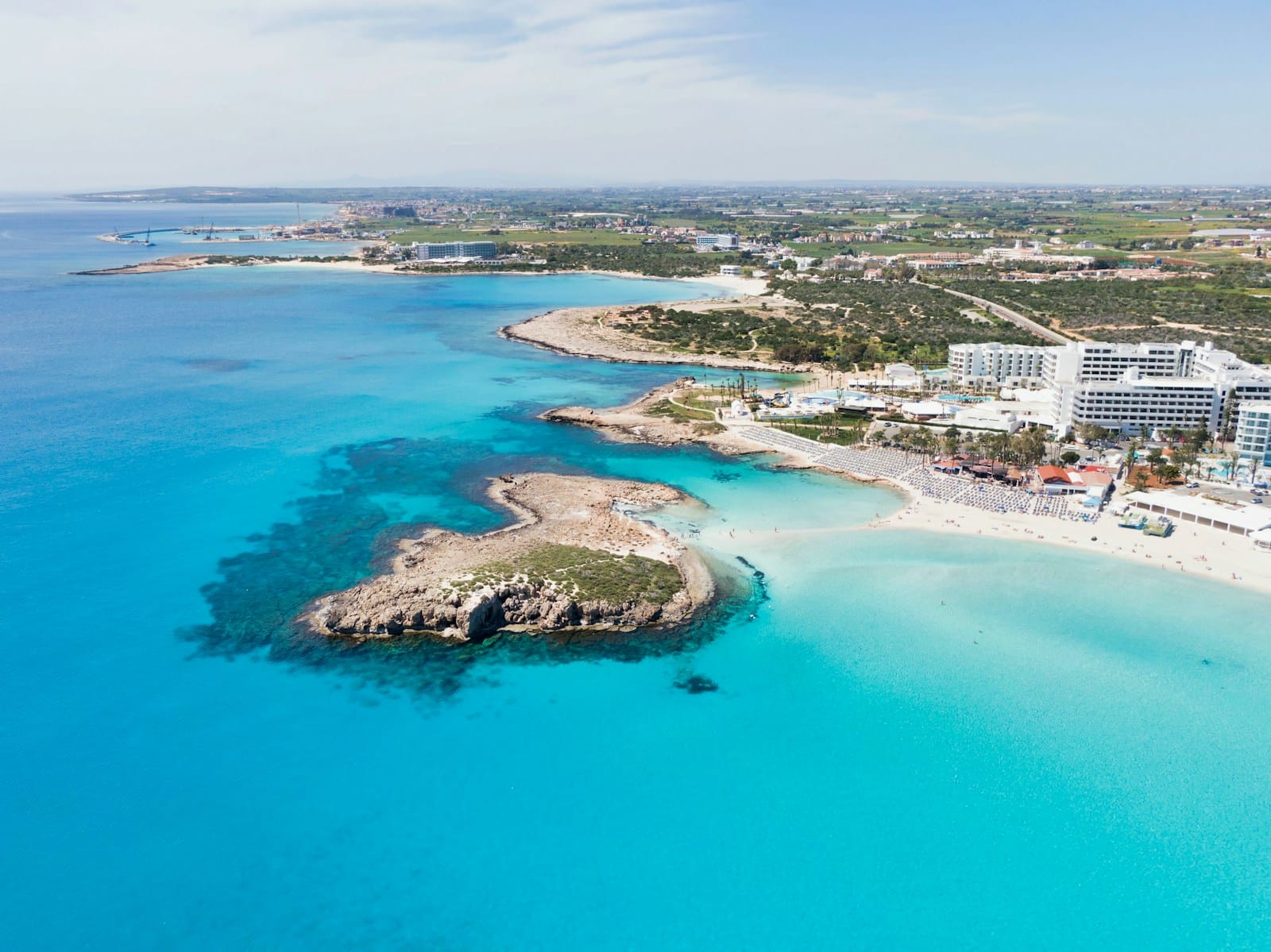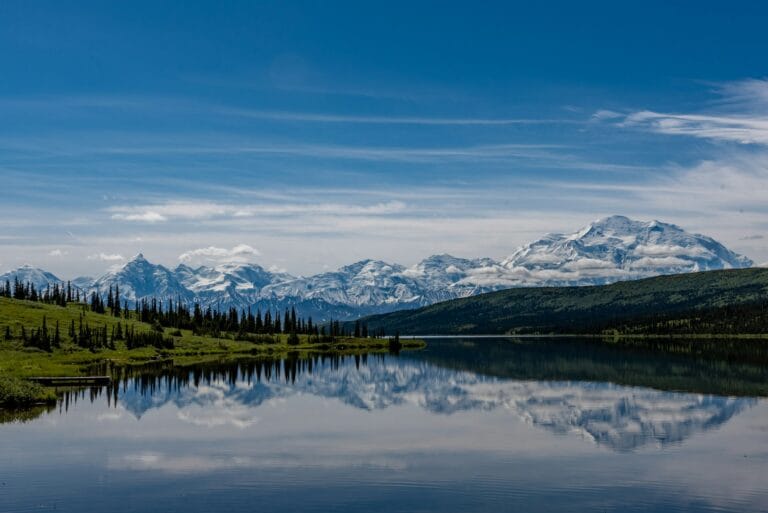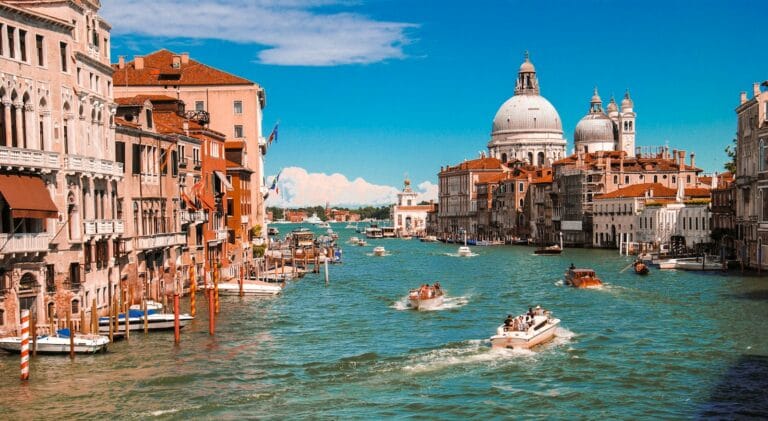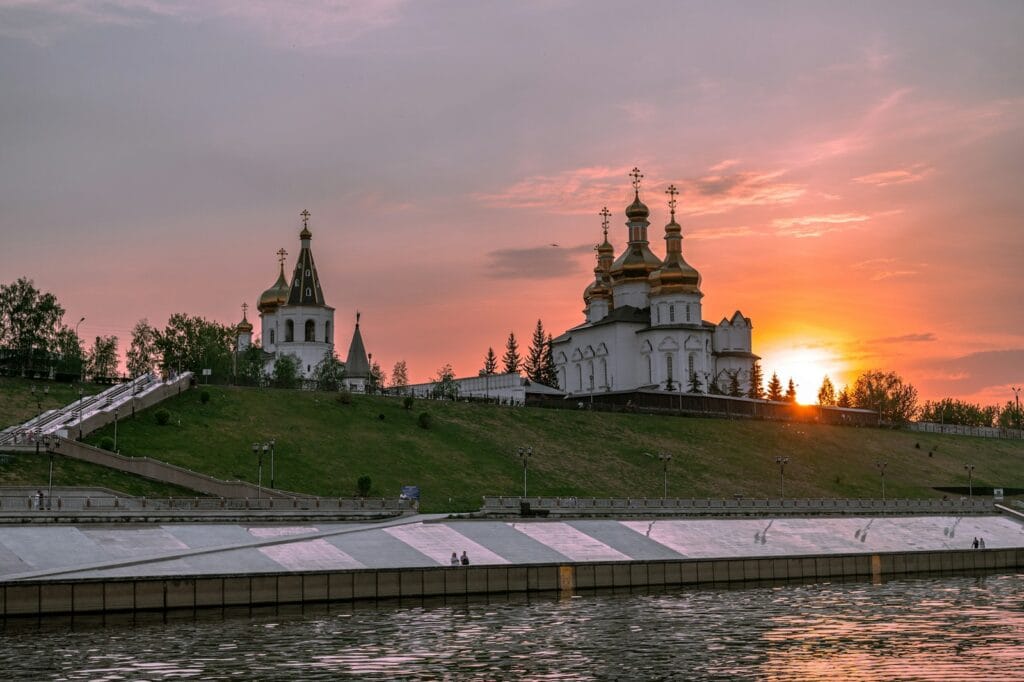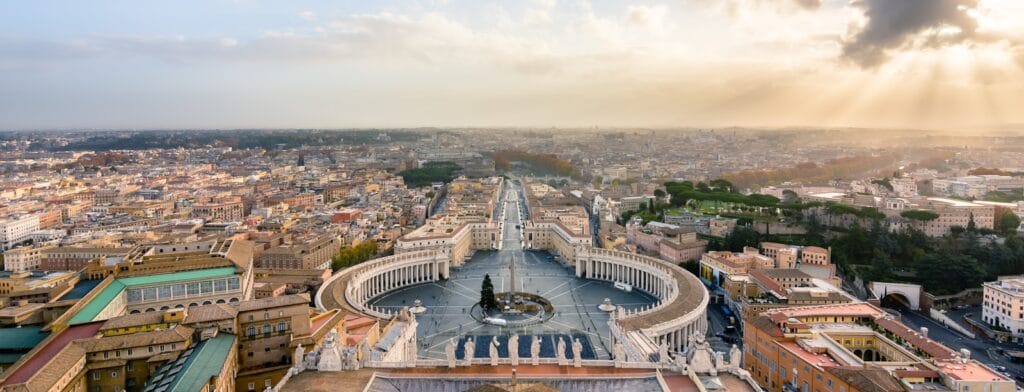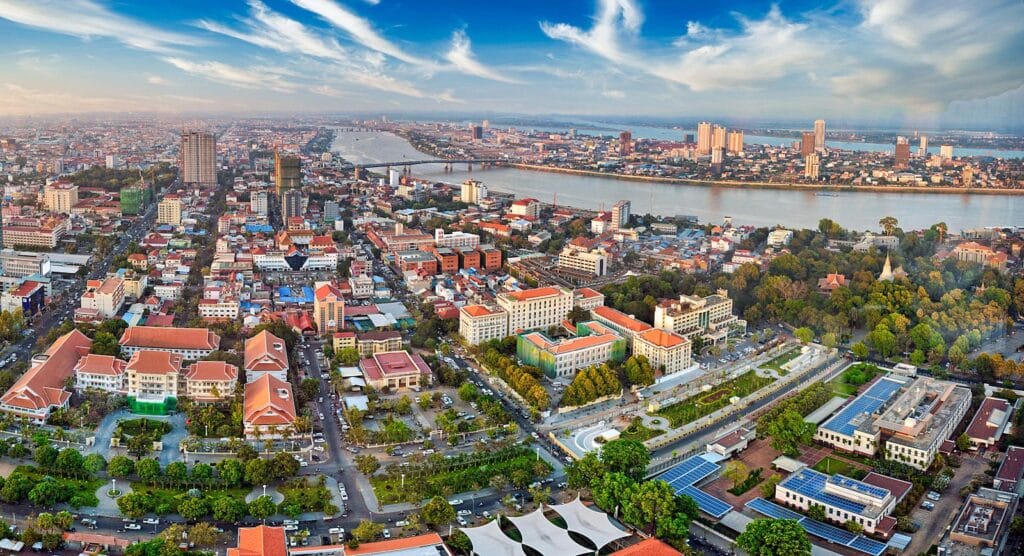Cyprus Travel Guide: Beaches, Ruins & Mediterranean Charm
Introduction to Cyprus Travel Guide
Cyprus is where ancient myths, sunny beaches, and multicultural layers meet under one Mediterranean sun. Split between Greek and Turkish influences, the island pulses with history, seaside charm, and a laid-back rhythm that invites both relaxation and discovery.
Whether you’re hiking through pine forests in the Troodos Mountains, wandering Roman ruins in Paphos, lounging on Ayia Napa’s golden sands, or crossing the border in divided Nicosia, Cyprus offers a rich blend of culture and coastline.
Start planning with our complete Cyprus Travel Guide — featuring region-by-region advice, cultural insight, transport, travel costs, and the best things to do across this historic and beachy Mediterranean gem.
Continent: Europe (geographically in Asia; culturally/politically European)
Country: Cyprus (Republic of Cyprus; northern region self-declared as Turkish Republic of Northern Cyprus)
Area: ~9,251 km²
Population: ~1.25 million (2024)
Density: ~135 people/km²
Capital: Nicosia (divided capital – Greek Cypriot south and Turkish Cypriot north)
Regions/Subregions: Nicosia, Limassol, Larnaca, Paphos, Famagusta, Kyrenia (de facto)
Language(s): Greek, Turkish (official); English widely spoken
Currency: Euro (EUR) in the south; Turkish Lira (TRY) in the north
Time Zone(s): EET (GMT+2), EEST in summer (GMT+3)
Airports: LCA (Larnaca), PFO (Paphos), ECN (Ercan – Northern Cyprus, via Turkey only)
Climate: Mediterranean — hot summers, mild winters
Known For: Ancient ruins, Blue Flag beaches, mountain villages, divided capital, halloumi cheese
Cyprus is part of the EU but not yet in the Schengen Zone (as of 2024), with straightforward entry for most Western travelers.
Visa-free: Up to 90 days for citizens of the EU, UK, U.S., Canada, Australia, Japan, and 90+ other countries.
Visa required: For several African, Asian, and Middle Eastern countries.
E-visa: Not currently available — travelers must apply via embassies if a visa is required.
Entry restrictions: Travelers entering via Northern Cyprus (Turkish-controlled area) may face limitations if later entering the Republic of Cyprus.
Official visa info: Cyprus Migration Department
No mandatory vaccines required
Recommended: Hepatitis A, Hepatitis B, Tick-borne diseases (if hiking), COVID-19
Healthcare: Excellent in urban areas; EU EHIC accepted
Pharmacies are well-stocked and common
Travel health updates — get coverage here
Stay Informed with Official Updates: World Health Organization – International Travel and Health | Centers for Disease Control and Prevention – Global Travel Health
Very safe country with low crime
Exercise caution in the UN Buffer Zone (Green Line) — avoid military areas and photography of guard posts
Political sensitivities exist between north and south — be respectful when crossing
Stay Informed with Official Updates: US Travel Advisory | UK Foreign Travel Advice
Independence Day: October 1
Greek Cypriot Easter (Orthodox calendar): March–April
Green Monday (start of Lent): February–March
Christmas: December 25
New Year’s Day: January 1
Holidays vary slightly between Greek and Turkish Cypriot regions.
Currency: Euro in the Republic of Cyprus; Turkish Lira in the north
Cards: Widely accepted in the south; cash preferred in northern shops
ATMs: Plentiful throughout both regions
Tipping: 5–10% appreciated but not obligatory
Duty-Free: Up to 1L spirits, 200 cigarettes, gifts under €430; cross-border duty limits apply
Cyprus has several international airports, each serving different regions of the island:
Larnaca International Airport (LCA) – Main airport for the south and east coast.
Carriers: Cyprus Airways, Wizz Air, Aegean, Lufthansa, Emirates.
Paphos International Airport (PFO) – West coast hub popular for resorts.
Ercan Airport (ECN) – In Northern Cyprus (accessible via Turkey only).
Note: Flights into ECN are not recognized by the Republic of Cyprus or EU.
Car Rentals: Popular and recommended — left-side driving
Buses: Intercity and local buses are reliable but infrequent on weekends
Taxis: Available in cities; no Uber; agree on fare if meter not used
Cross-Border: Pedestrian crossings open in Nicosia and a few other points — passport required
Tip: Use a rental car from south to cross north (but not vice versa due to insurance restrictions)
SIM Cards: MTN, Cytamobile, Epic in the south; Turkcell and Telsim in the north
Coverage: Excellent 4G/5G in cities; solid across most rural areas
Wi-Fi: Available in hotels, restaurants, cafes
Digital Nomads: Cyprus offers a residence permit for remote workers earning non-local income
Drinking Age: 18
Dress Code: Modest clothing recommended in churches and villages
LGBTQ+ Rights: Legal and protected in the Republic; more conservative in the north
Behavior: Friendly and welcoming culture; avoid political discussions about the Cyprus conflict
Language Tip: “Kalimera” means good morning in Greek; English is fine for travel
Emergency Numbers (Republic of Cyprus):
General Emergency: 112
Police: 199
Ambulance: 112
Tourist Police: Available in major cities and resort towns
Hospitals: Nicosia General Hospital, Limassol General Hospital, Makarios Children’s Hospital
Always carry identification when crossing between regions
Summer (May–October): Hot and sunny — 30–37°C (86–99°F)
Winter (Dec–Feb): Mild and rainy; snow in Troodos Mountains
Best Time to Visit: April–June and September–November (less heat, ideal for hiking and beach)
Weather Forecast
Cyprus by Region – Where to Go
Cyprus is divided into six main districts, each offering a different flavor of island life — from ancient ruins and luxury resorts to mountain villages and beach towns.
Nicosia District (Center)
- Nicosia (Lefkosia) – The divided capital city offers a fascinating blend of Greek and Turkish Cypriot culture. Walk the Green Line, explore Ottoman architecture, and sample both cuisines.
Larnaca District (Southeast)
- Larnaca – A relaxed seaside town with a historic promenade, ancient churches, and access to Salt Lake and flamingo-filled wetlands.
- Lefkara – Famous for lace-making and silverwork, this village blends tradition with mountain charm.
Limassol District (South)
- Limassol – A cosmopolitan city with a medieval castle, wine festivals, a busy marina, and beach clubs.
- Kolossi Castle & Kourion – Explore Crusader fortresses and cliffside Greco-Roman ruins.
Paphos District (Southwest)
- Paphos – A UNESCO-listed city with mosaics, tombs of the kings, and Aphrodite’s legendary birthplace.
- Polis & Latchi – Quieter coastal villages near the Akamas Peninsula.
- Coral Bay – Popular beach town for families and resort travelers.
Famagusta District (East)
- Ayia Napa – Party central in summer, known for golden beaches and nightlife.
- Protaras – Family-friendly beach destination with crystal-clear water and excellent snorkeling at Fig Tree Bay.
Troodos Mountains (Interior)
- Mount Olympus – The island’s highest peak, great for hiking, snow in winter, and cool air in summer.
- Kykkos Monastery – One of the most lavish and historically important monasteries in Cyprus.
- Omodos & Kakopetria – Wine villages with cobblestone charm and traditional tavernas.
Top Places to Visit in Cyprus
Historical & Cultural Sites
- Kato Paphos Archaeological Park – Roman villas with elaborate mosaics.
- Nicosia Old Town – Divided city center filled with cafes, craft shops, and museums.
- Tombs of the Kings (Paphos) – A vast necropolis carved into rock.
- St. Hilarion Castle (North Cyprus) – A mountaintop fortress straight out of fairy tales.
Nature & Beaches
- Fig Tree Bay (Protaras) – Crystal-clear water and soft sand.
- Lara Beach – Remote nesting beach for loggerhead turtles.
- Akamas Peninsula – A wild and protected area perfect for jeep safaris and hiking.
- Troodos Trails – Pine forests, waterfalls, and mountaintop views.
Coastal Cities
- Limassol – Urban-meets-beach lifestyle, shopping, and nightlife.
- Larnaca – A more laid-back beach town with local vibes and history.
How to Choose Where to Go in Cyprus
- For beach holidays: Choose Ayia Napa, Protaras, or Coral Bay for resort living.
- For history lovers: Base in Paphos, Nicosia, or Limassol for ancient ruins and museums.
- For mountain air and hiking: Explore the Troodos Mountains and traditional villages.
- For quiet romance or wine travel: Visit Omodos, Polis, or Lefkara.
- For a cross-cultural experience: Spend time in Nicosia and cross into North Cyprus.
Most travelers base in 1–2 regions and take day trips — roads are good and distances are short.
How to Get Around Cyprus
- Car Rental – The most flexible and recommended option (drive on the left side).
- Intercity Buses – Reliable and cheap for main routes between cities.
- Local Buses – Operate in towns, but limited in rural or mountain areas.
- Taxis & Apps – Taxis are expensive; Bolt is active in some cities.
Border crossings: You can cross between South (Republic of Cyprus) and North (TRNC) at several checkpoints in Nicosia, Ayia Napa, and Limassol — bring your passport.
Travel Budget & Costs in Cyprus
Average Daily Costs:
- Budget: €40–60/day (hostels, street food, buses)
- Mid-range: €80–150/day (3-star hotels, car rental, guided tours)
- Luxury: €200–400/day (beach resorts, private guides, fine dining)
Sample Prices:
- Entry to ruins/museums: €2–5
- Local taverna meal: €8–12
- Car rental/day: €30–50
- Boat trip or jeep safari: €30–60
- Hotel (mid-range): €60–120/night
Money-saving tips:
- Travel shoulder seasons (May–June, Sept–Oct)
- Eat at local tavernas or bakeries
- Visit free beaches and churches
Best Time to Visit Cyprus
Spring (March–May):
- Blooming countryside, perfect hiking weather, and few crowds
Summer (June–August):
- Peak beach season, hot temperatures, and vibrant nightlife
Autumn (September–October):
- Warm sea, wine harvest, and golden sunsets
Winter (November–February):
- Quiet and budget-friendly; some mountain snow in Troodos
Must-See Experiences in Cyprus
- Swim at Aphrodite’s Rock, mythic birthplace of the goddess
- Cross the Green Line in Nicosia, Europe’s last divided capital
- Tour ancient Kourion, perched on cliffs above the sea
- Hike the Artemis Trail around Mount Olympus
- Dive a shipwreck, like the Zenobia off Larnaca
- Visit Kykkos Monastery, filled with gold and frescoes
- Sample Commandaria wine — one of the world’s oldest
- Eat meze by the sea, with grilled halloumi, olives, and ouzo
Explore curated Cyprus tours and discover incredible things to do in Cyprus, from village vineyards to cliffside ruins.
Best Travel Itineraries in Cyprus
Classic Cyprus – 7 Days
- Larnaca → Limassol → Paphos → Troodos → Larnaca
History, beaches, and mountain villages in one loop.
Beach & Ruins – 5 Days
- Ayia Napa → Protaras → Kourion → Paphos
Best for short, sun-soaked escapes with cultural depth.
Cultural Cyprus – 10 Days
- Nicosia → Lefkara → Troodos → Paphos
Perfect for slow travelers and heritage lovers.
Cross-Border Explorer – 8 Days
- Nicosia → Kyrenia → Famagusta (North Cyprus) → Larnaca
See both sides of the island for contrast and context.
Local Cuisine & Culinary Experiences
Cypriot food blends Greek, Turkish, and Levantine flavors with its own island spin.
Must-Try Dishes
- Souvla – Grilled meat on long skewers over open flame
- Kleftiko – Slow-cooked lamb in a clay oven
- Halloumi – Grilled local cheese, often served with watermelon
- Tava – Spiced meat stew baked in clay pots
- Meze – A series of small dishes like hummus, olives, dips, and grilled meats
Drinks to try:
- Commandaria – A sweet dessert wine dating to the Crusaders
- Zivania – Strong grape brandy, often served after meals
- Local wines – Try Maratheftiko reds or Xynisteri whites
Join a village food tour, dine at a beachfront taverna, or visit a winery in Troodos.
Travel Safety & Cultural Etiquette in Cyprus
Safety Overview
- Cyprus is very safe, with low crime and good infrastructure.
- Use sun protection, especially in summer.
- Respect sensitive discussion around the island’s division — stay neutral in political topics.
Cultural Etiquette
- Dress modestly in churches and monasteries.
- Tip 5–10% in restaurants, though not mandatory.
- Don’t rush meals — dining is a slow, social experience.
- Learn a few words: “Kalimera” (Good morning), “Efharisto” (Thank you).
Where to Go Next – Pair Cyprus with These Destinations
- Greece – Direct flights to Athens, Crete, or the Cyclades for history and island-hopping.
- Turkey – Fly or ferry to Antalya or Istanbul; strong cultural links.
- Armenia – Quick flight from Larnaca; combine Mediterranean with mountains.
- Georgia – Direct routes to Tbilisi; explore the Caucasus and wine regions.
- Israel – Combine Tel Aviv’s buzz with Cyprus beaches via 45-minute flights.
Explore our Greece Travel Guide, Turkey Travel Guide, Armenia Travel Guide, Israel Travel Guide, and Georgia Travel Guide to build your extended itinerary.
Final Planning Checklist for Cyprus
- EU/Schengen travelers can enter freely; others may need a short-stay visa
- South Cyprus uses the Euro (€); North Cyprus uses the Turkish Lira (TRY)
- Rent a car for full island exploration (drive on the left)
- Pack beachwear, hiking shoes, and modest clothes for monasteries
- Book beach resorts and rental cars early in peak season
- Download offline maps — especially if crossing borders
- Respect both sides of the island — cultural sensitivity goes far
- Hydrate and wear sunscreen — Cyprus sun can be intense
Explore Cyprus with confidence using our trusted tips, local insights, and region-by-region planning tools.
For more expert travel tips, practical strategies, and trusted tools — visit our Homepage and get inspired for your next trip.

